No Water, No Life. No Blue, No Green.
Sylvia Earle
Nina Christesen - Studio Stories
The Journey of making Art
“It started with an idea about…”
Every artwork is created from an idea, shaped by exploration, unpredictable processes, happy accidents and mistakes.
This journey of creativity is so absorbing I rarely recall what I do, so I write the story of the process.
As a way of inviting you into my studio, I hope you enjoy these notes.
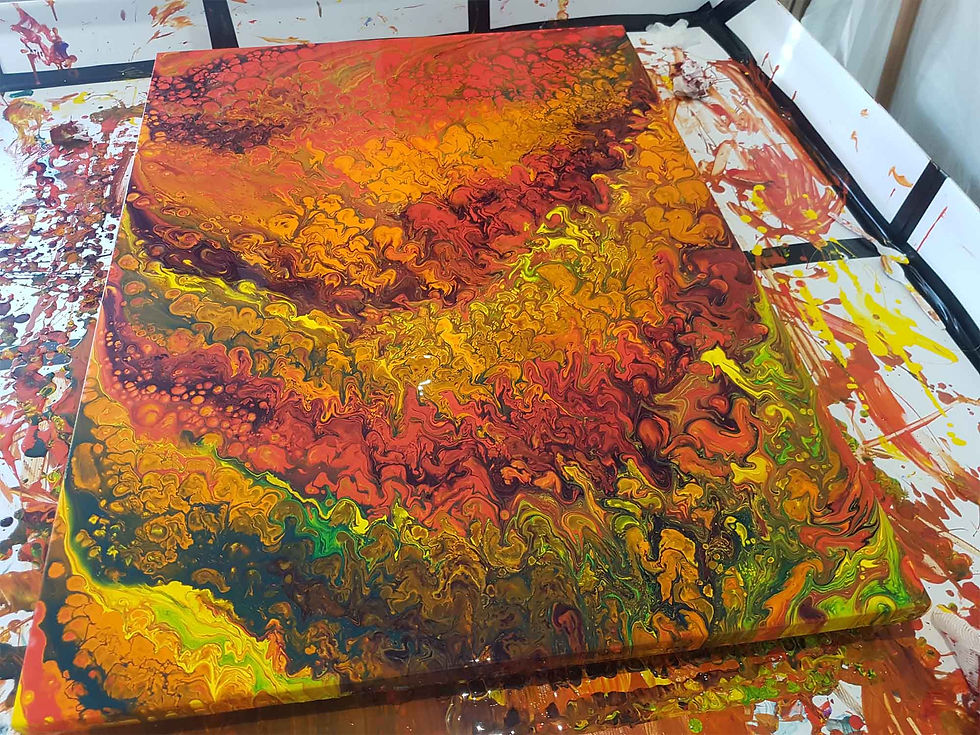



Pindan Formations is a painting inspired by a magical transformation in the landscape that occurs in the 8-month dry season in the Kimberley Region of North-Western Australia.
Under the relentless sun, the plants die away and the muddy Pindan soil that rests on the beach sand dries and peels back.
This living abstract artwork creates wave-like forms that are especially revealed at sunset when the shadows move across the landscape.
The challenge was to use fluid art and additives in a way that would show the imprint of the water in the soil (now evaporated) and the individual sections of the dried mud.
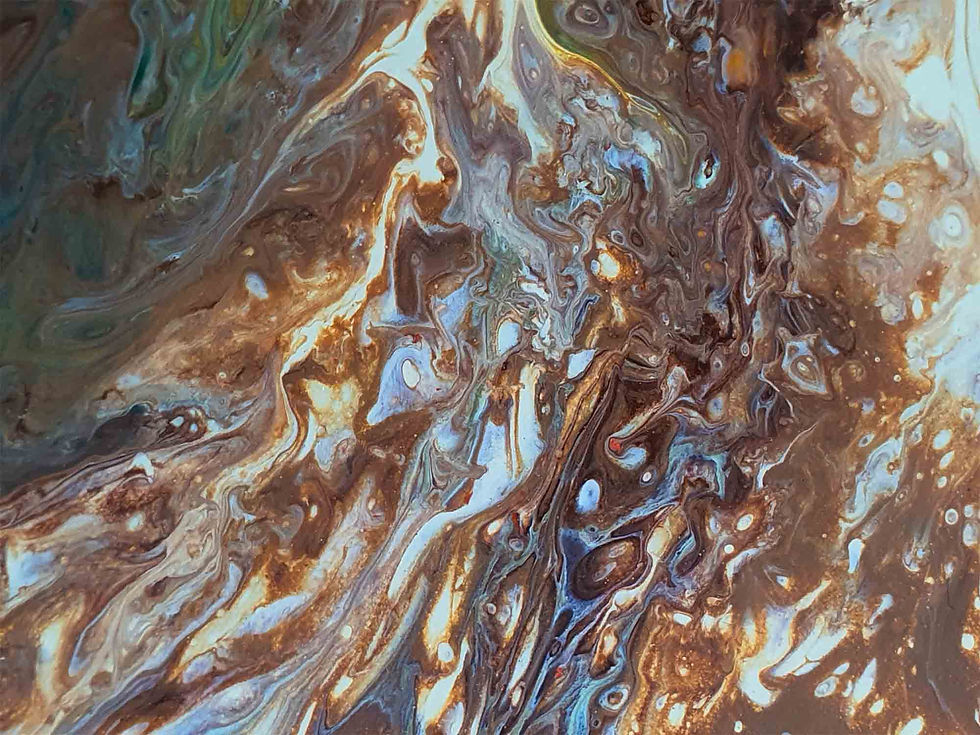



After Rains is one of a triptych of paintings that show the aerial view of the impact of the seasons on The Gulf Country in Northern Australia.
This low-lying region of savannah grasslands, cut through with rivers that carry the monsoon rains to the Gulf of Carpentaria, dramatically transforms as it moves from the wet monsoon to the dry season.
The disappearing green of the dying native grasslands and drying land reveal the river bed.
The lacing patterns from the overflow of the water that breaches the river banks come from the water moving between grasses, a feature of this landscape.
I enjoy painting small canvases, sometimes in a series exploring an effect in the landscape.
These small paintings can be developed into much larger digital prints.




Tropical Current was a painting inspired by a wonderous bright blue glow that occurs in warm tropical waters produced by billions of single-celled algae called Noctiluca Scintillans, commonly known as “sea sparkle”.
This harmless microscopic plankton floats just under the surface of the water and produces a chemical called luciferin which emits blue light.
This light show is activated if threatened by predators or disturbed by currents and winds.
I chose a palette of liquid paint blues to produce a greenish tinge when mixed, and white paint to create the patterns of the current.
The close-up views show the gradations in the paint produced by different additives to get the desired effect.
Like the phenomena itself, this painting looks dramatic when lit at night.




Headland Whirlpool is a painting inspired by walking along the coastal paths in southern Victoria where the ocean between Australia and Antarctica reaches the shore.
The view from the top of these narrow pieces of land that project into the sea gives a birds-eye view of the water churning in a foam below.
These coastlines usually have high cliffs and a base of rocks formed from the erosion of the water.
As a child, I used to love clambering over these rocky shores in low tide full of holes that hid crabs and little fish.
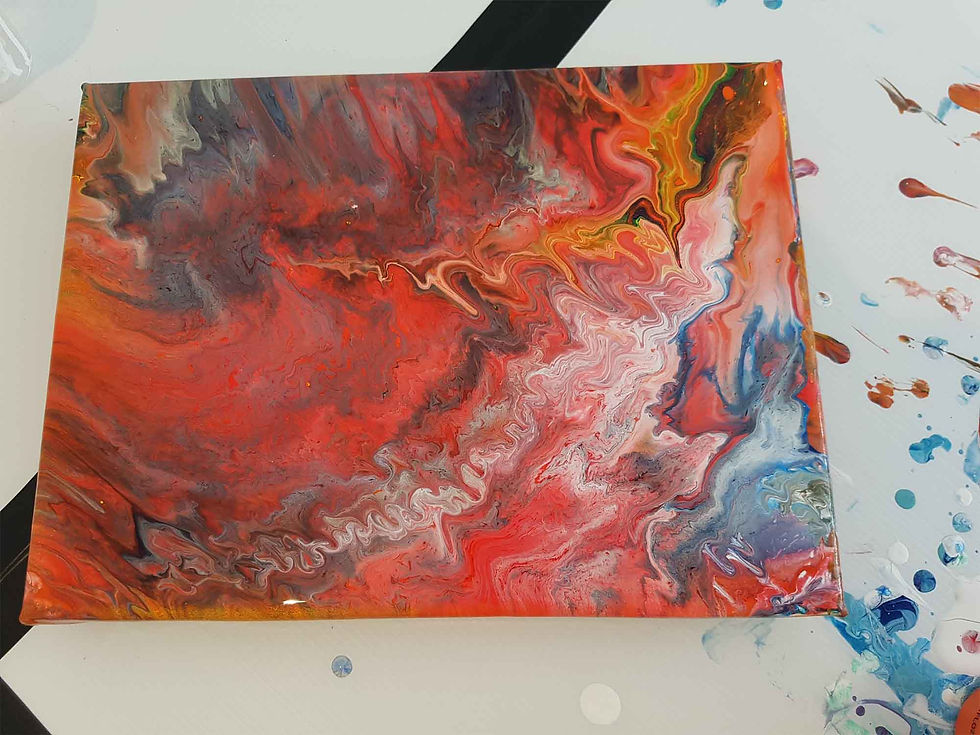



Desert Waves is a painting inspired by aerial views of red deserts in central Australia where rock formations in parts of the country appear like waves, a reminder of the ancient seas that once were there.
Australia is an ancient land, and I am fascinated by how it holds the past in its shape and forms.
About one hundred and ten million years ago a shallow sea covered what is now arid inland Australia.
The water dried up long before humans came to Australia, but many clues of the ancient seabed are found in fossils of spectacular marine life in these red rocks.
I chose a palette that would reveal some of the blue of the ancient sea that no longer is evident in the current landscape.
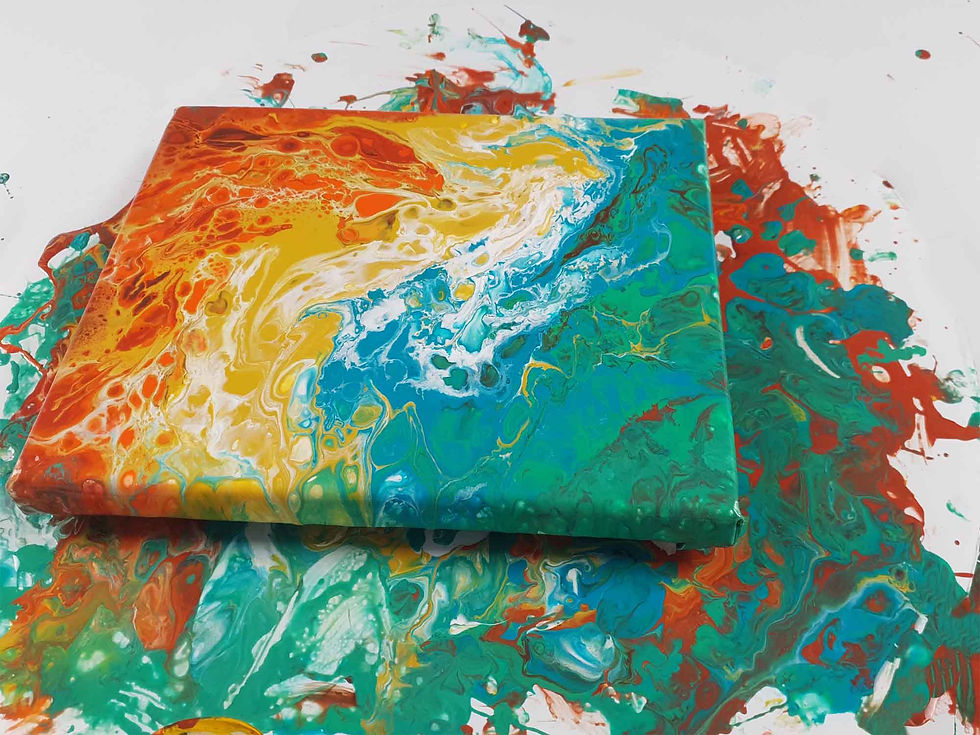
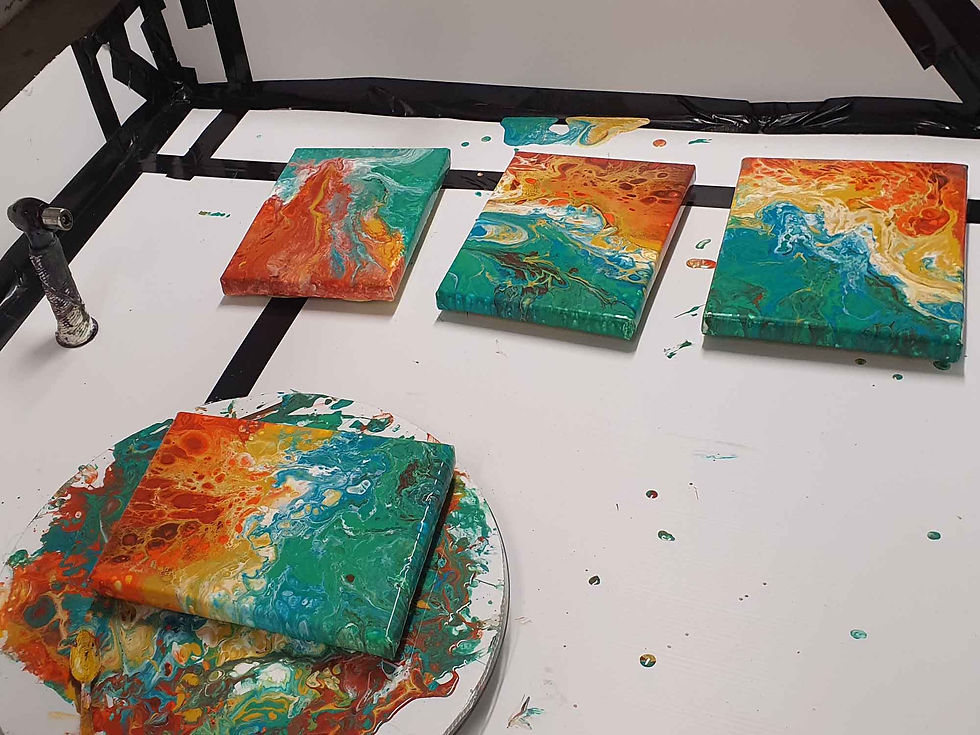


Pilbara Coast is a series inspired by images of flying into Karratha an isolated city 1600 kilometres north of Perth in the north of Western Australia.
Karratha is an Aboriginal word meaning “good country” or “soft earth” and the red soil of this Pilbara Region is rich in both history and minerals.
It has over 10,000 Aboriginal rock engraving sites and huge reserves of iron ore and other natural resources
In these paintings, I wanted to show the spectacular juxtaposition of colours and texture seen from above, where the red dirt meets the white sands and emerald sea, the colours look almost unnatural and painterly in their vibrancy and textures.




Barrier Reef inspired by aerial views of the Barrier Reef in the spawning season.
This painting focuses on the patterns created by currents and winds flowing over shallow reef corals and rocky outcrops merging with the various shades of blue of water at different depths.
Observing in detail the changes in the landscape around me often guides me in my approach to a painting.
Watching the tides affect the movement of the water on the sand at a beach in Anglesea in Victoria on a wintery day gave me the idea to mimic this process with fluid paint by creating a shoreline first and then guiding the water across it.

